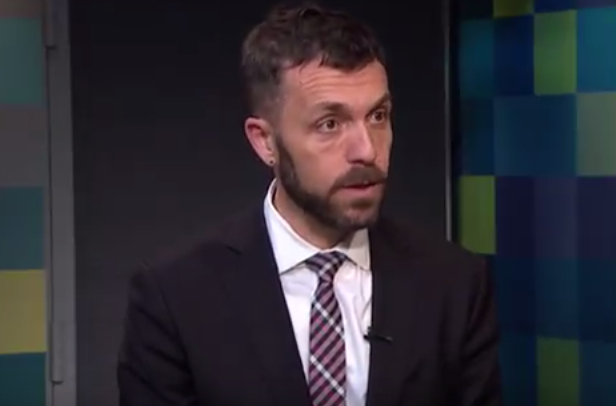
BRIC-TV
Criminal-justice reform advocate Gabriel Sayegh says both the city and the state can take steps to close Rikers faster.
In the wake of a state budget that whiffed on criminal justice reform, Gov. Cuomo has continued to chide Mayor de Blasio for sticking to a 10-year timeline for closing Rikers Island that the governor believes is too slow. City Hall, meanwhile, says it can’t achieve a faster timetable if the state, which controls the court, parole and prison systems and maintains the laws governing arrest and prosecution, doesn’t get its own house in order.
Both men are right. And both men are wrong. At least, that was the take of Gabriel Sayegh, a veteran criminal-justice reform advocate and the co-founder and co-executive director at the Katal Center for Health, Equity, and Justice, when he appeared on the daily BRIC-TV show 112BK on Thursday. (See the video below)
Sayegh’s comments came amid a growing dispute over a key part of the city’s Rikers-shutdown plan: the proposal to build a new jail on what is now a city tow-lot in Mott Haven. Creating new facilities to hold the detainees and inmates who remain in city custody after Rikers is closed is an essential step toward mothballing the island jails. City Hall plans to expand existing jails in Manhattan and Brooklyn, re-open an old one in Queens and build a new one in the Bronx. De Blasio’s bid to exclude Staten Island is controversial, and some in the South Bronx want the proposed location for the new facility reconsidered.
Also this week, the Lippman Commission—the blue-ribbon panel that last year called for Rikers’ closure shortly after the mayor signed on to the cause—issued its one-year report on progress toward shutting Rikers down. The panel detects real progress, like a 10 percent decrease in jail population. But it sees the need for the city and the state to make independent moves to get faster change: “In the next year, the City, the courts, and the District Attorneys should continue to divert people out of the criminal justice system and ensure that cases do not linger in the courts. There is much that can be done, even without state legislative change. But at the state level, bail legislation and other initiatives could be transformative. And with respect to designing modern borough facilities, serious community engagement is fundamental so that the new facilities address local needs and concerns.”







